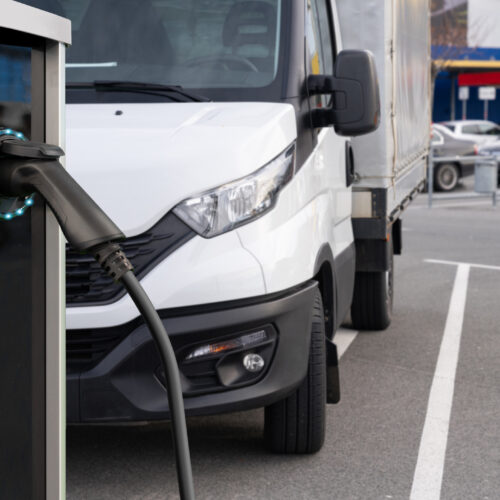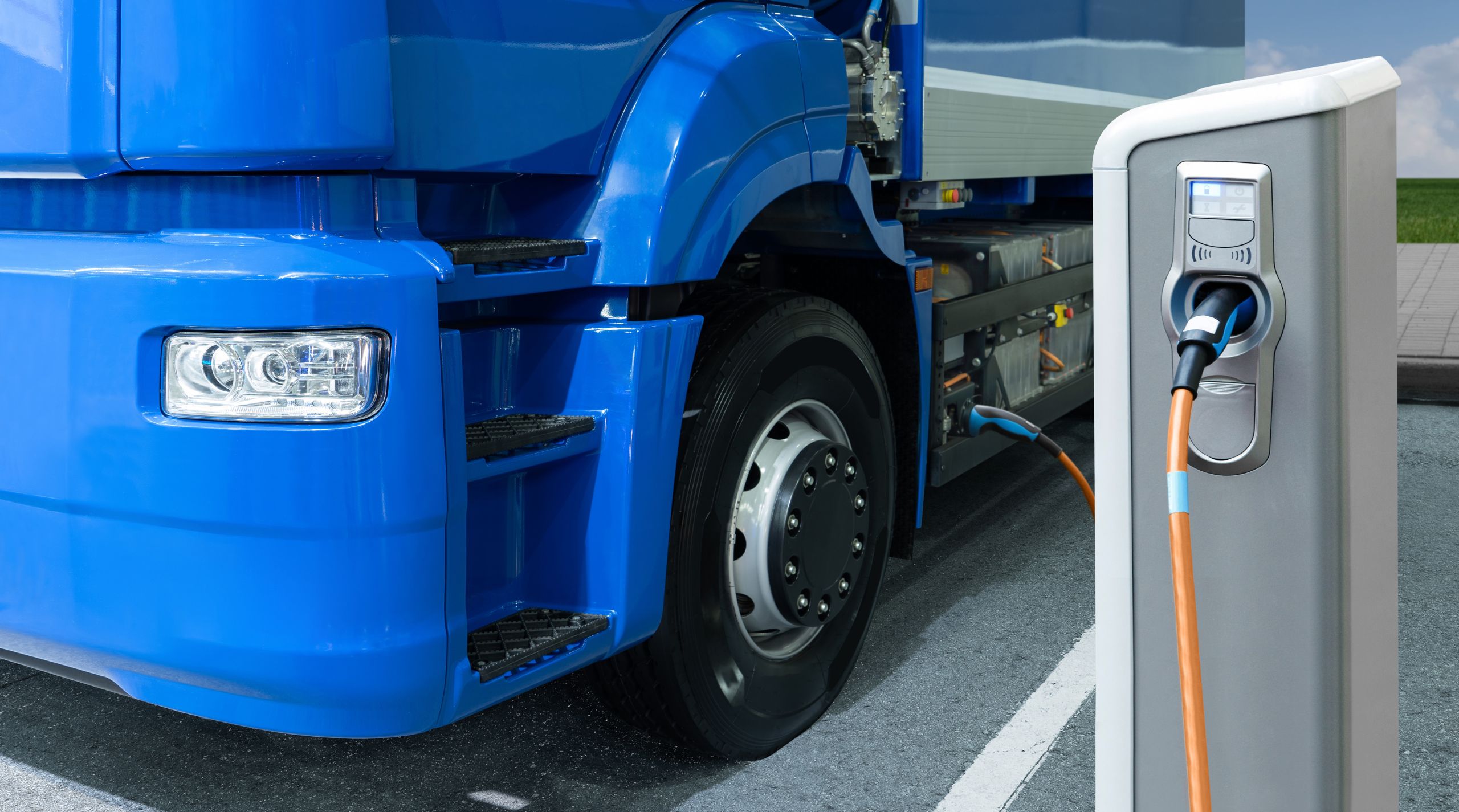September 9 marks World EV Day: a global reminder that the shift to electric mobility is no longer a vision for tomorrow, but a reality taking shape today. Passenger cars usually get most of the headlines, yet in logistics the stakes are even higher. Delivering goods on time, across long distances, and often under unpredictable conditions makes the electrification journey far more complex than simply swapping diesel for electric.
From the high upfront cost of electric trucks to the uneven rollout of charging infrastructure, fleet managers face a whirlwind of uncertainity. Policy incentives differ from one region to the next. Urban centers may have charging stations on every corner, while cross-border routes remain patchy. Against this backdrop, EV logistics is emerging as both a challenge and an opportunity. The companies that can crack the code on next-gen route planning combining vehicles, charging, and smart logistics software will define what the future of sustainable transport really looks like.
What the Industry Is Asking For
When you look beyond the headlines and into the day-to-day discussions of fleet operators, planners, and sustainability leaders, a clear picture emerges. The promise of electric trucks is compelling: quieter cities, cleaner air, lower long-term costs but the road to fully electric logistics is anything but straightforward.
Across the broader EV community on reddit, drivers frequently raise questions that echo the challenges faced by commercial fleets:
- How do I plan routes when charging stations aren’t guaranteed to be available?
- How can I keep deliveries on schedule when charging adds hours to my day?
- What happens if weather or payload drastically reduces my truck’s range?
And they point to the gaps that EV logistics software needs to fill:

- Energy and charging constraints – Urban depots may be well served, but rural and cross-border routes often struggle. Without reliable charging options, range anxiety isn’t just a driver issue, it becomes a business risk.
- Real-time adaptability – Traditional logistics tools are static, built for yesterday’s world of diesel predictability. But EV fleets need route planning that can adjust on the fly to delays, weather, or charging availability.
- Scaling complexity – A few test vehicles are one thing. Transitioning an entire fleet requires software that can model not just routes, but the knock-on effects of depot power loads, charging schedules, and even grid constraints.
- Cost visibility – Decision makers aren’t just comparing routes, they’re comparing costs. The ability to predict the financial impact of battery use, energy pricing, and charging downtime is becoming central to investment decisions.
This is why conversations around next-gen route planning are gaining traction. The shift isn’t only about putting more electric trucks on the road; it’s about creating the intelligence layer that makes EV fleets practical, profitable, and scalable.
Did you know?
Evolving Complexity – From Theory to Practice
As EV fleets expand, the challenges are becoming more layered. What once seemed like simple questions (“How far can the truck go?” or “Where can it charge?”) now unfold into complex logistics questions.
Researchers have been modeling these problems for years. Take the concept of two-echelon EV routing:
Instead of a straight line from depot to delivery, trucks may move goods first to a hub, then transfer them to smaller electric vehicles for the last mile. On paper, it’s an elegant solution that reduces emissions in cities and keeps larger vehicles on highways. In practice, it raises new questions:
- How do you schedule charging across two different vehicle classes?
- What if one hub doesn’t have the power capacity to support peak demand?
Another example is adaptive charging strategies. Academic models show that smartly timing when and where trucks charge can drastically reduce waiting times at stations. But when you translate those models into the real world, they collide with factors like fluctuating energy prices, drivers’ legal rest periods, and unpredictable traffic.
This gap between theory and practice is where EV logistics needs the most innovation. Logistics leaders aren’t asking for academic perfection but for operational clarity. They need EV route planning tools that can bridge the research frontier with the day-to-day reality of running a fleet.
And that’s exactly where the conversation shifts from “EVs are coming” to “EVs are working.”
Operational Clarity in EV Logistics
For all the technical progress being made, there’s one truth that logistics operators know better than anyone: deliveries can’t wait. Routes must be completed, customers expect reliability, and supply chains run on tight schedules. The operational reality is that logistics doesn’t pause for recharging.
As Tim Honschopp, from MAN Transport Solutions (part of MAN Truck & Bus SE, a team of experts that advises and supports customers switching to alternative drives) puts it:
“Shifting from Diesel to Electric-operation isn’t just changing the vehicle – it’s a whole new ecosystem. Fleet managers need to know how the eTrucks perform under various conditions, need to know where suitable charging stations are en-route and where to charge in the most economical way without forgetting about the on-time delivery of their goods.”
His words underscore the core challenge: EV adoption is about more than trucks and chargers and is about ensuring operational clarity across the entire ecosystem. That clarity means understanding not just if a truck can complete a route, but how it will do so under real-world conditions:
- Will the vehicle make it back to the depot on a winter day when range drops?
- Will drivers spend half their shift waiting for a charging station to free up?
- What happens if a delivery run crosses borders where charging infrastructure is inconsistent?
These are the questions keeping logistics managers up at night. And they explain why the next wave of EV logistics software isn’t simply about plotting lines on a map. It’s about providing decision-makers with confidence:
- Confidence that their fleet will arrive on time.
- Confidence that charging downtime is minimized.
- Confidence that costs are transparent and predictable.
When the conversation shifts from “can we run this truck?” to “can we run this fleet efficiently?”, the role of next-gen route planning becomes undeniable. It’s not just about electrifying trucks but electrifying logistics with intelligence.
Principles for Next-Gen Route Planning
Through conversations in the industry, research insights, and operator feedback, three clear principles stand out for what next-gen EV logistics software must deliver:
| 1. Predictive energy and charging modeling | The range of an electric truck is never a fixed number. It shifts depending on payload, terrain, temperature, and even the age of the battery. Fleet managers need software that can model consumption accurately, so they can plan routes efficiently. |
| 2. Real-time resilience and adaptive routing | Logistics rarely goes to plan. Traffic builds up, weather changes, and deliveries run late. The next generation of EV truck route planners must be able to recalculate routes on the fly adapting to what’s happening in the real world, not just what was expected on paper. |
| 3. Scalable, multi-tier logistics | Electrification at scale is about coordinating entire fleets across depots, hubs, and last-mile operations. That means route planning tools need to handle two-echelon logistics models, optimize charging schedules across multiple sites, and integrate seamlessly with mixed fleets. |
Together, these three pillars represent the foundation for turning EV adoption from a sustainability goal into an operational reality.
Building Blocks for Scaling Electric Fleets
The good news is that the logistics industry isn’t starting from zero. Tools are already emerging that reflect these principles and help fleets navigate the transition to electric.
Take predictive energy and charging modeling. Modern planning tools now account for far more than distance. They consider payload weight, elevation profiles, road types, even seasonal weather effects. Instead of a generic “maximum range,” logistics managers see realistic projections of how their electric trucks will actually perform on a given route.
Then there’s real-time adaptability. A static plan might look good in the morning but quickly becomes outdated once traffic builds or deliveries run late. Intelligent EV routing software can recalculate on the fly, ensuring trucks still hit their delivery windows while factoring in charging stops and energy use.
Finally, consider scalability. Fleets aren’t electrifying one truck at a time; they’re rethinking entire operations. Advanced route planners support multi-echelon logistics models, helping companies manage depot-to-hub transfers, last-mile drops, and everything in between. The ability to integrate EVs into mixed fleets: diesel, hybrid, and electric side by side makes the transition smoother and far more achievable.
These capabilities are the building blocks of operational clarity, turning EV adoption into something more than a sustainability checkbox. They enable logistics leaders to scale electrification with confidence, knowing that their routes, costs, and timelines are not just feasible but optimized.
Driving the Future on World EV Day
World EV Day isn’t just about celebrating electric vehicles but about asking harder questions about what comes next. For logistics, that means looking beyond vehicle adoption and focusing on the systems, tools, and planning needed to keep goods moving reliably in an electrified world.
The principles are clear: predictive energy modeling, real-time adaptability, and scalable multi-tier logistics. Together, they mark the difference between experimenting with EVs and running fleets that perform at scale.
At PTV Logistics, we believe the transition should feel less like a leap of faith and more like a data-driven decision. That’s why we’ve made a version of our PTV EV Truck Route Planner available as a free tool so fleet managers can test routes, explore feasibility, and see how intelligent planning changes the equation.
Test your first route for free here.
The conversation should be about logistics leadership and the companies willing to build the future of transport, one smarter route at a time.

